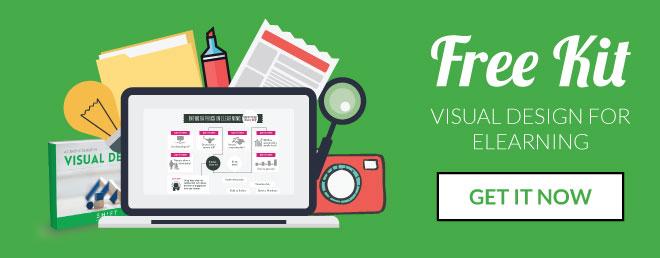The digital space is bigger than ever. Nowadays, half of our lives happen on the Internet. Social media networks, information, and all the time spent online is making us evolve, some would say.
As everything evolves, so does the learning world. Let’s take a look at five of the most important learning tech trends we’ll be seeing in 2017 and beyond:
1) Mobile Learning
Mobile learning is happening right now, everywhere. Companies will have spent over 37 billion dollars by 2020 in order to efficiently provide information to their employees through mobile devices. In addition, according to the 2016 Brandon Hall Group research,mobile learning is one of the top three learning priorities for companies in the coming year.
As everyone uses a smart phone or a tablet these days, corporate workers can take advantage of this learning platform whether they are on the go, working from home, or at the store with a client. They want a seamless experience, regardless of the device they use.
If you think about it, the most commonly used device today is the cell phone. You carry it around everywhere and use it constantly. So why not use it for learning too? Your employees can learn new things while on the bus or while driving. It's true; attention spans may be shorter, but people will get used to it and eventually become a continuous learning machine.
Download: Harnessing the Mobile Storm: The Power and Potential of Mobile Learning
2) Augmented Learning
Another fast-paced, growing trend is augmented learning. It consists of virtually taking learners into another dimension of knowledge. In essence, AR amplifies the learner’s senses through the power of mobile devices, creating an immersive experience that appeals to them at a whole new level (intellectually, physically, and emotionally).
Wearable Widgets such as Apple Watch or Google Glass will soon become mainstream and widely used. Our everyday realities will change, and so will the way we learn things. Augmented learning aims to enhance the learner’s journey and provide rich, interactive and personalized learning activities.
The market is predicted to grow at an exponential rate, reaching almost two hundred million users in about three years. 2017 is the year in which augmented reality and learning are supposed to “boom” in users numbers.
Check out this example: This augmented reality tool could totally change med school
3) Video-Based Learning
Did you know that more than a billion people regularly watch videos and that the number of hours spent watching videos increased by 60% in the last year alone? Did you also know that video-based is so popular that 98 percent of all companies and brands plan to include it in their eLearning strategies? It is quite interesting how things are evolving. Video now makes up 64 percent of Internet traffic on mobile phones. People today would rather watch educational material than text alone. Let’s be honest. Sometimes is just easier to turn on the screen and play a high quality video that explains the information as better as any other article or text.
YouTube has become the biggest search engine for how-to educational learning. Every problem you have, you’re asking for the solution by typing a key phrase in a search engine. In a few seconds, you can solve your problem by watching a video.
Read more:
- 3 Benefits of Video-Based Training Courses
- 5 Tips To Create Effective Video-Based Learning For Corporate Training
4) Gamification
Gamification is not a new concept, yet it is becoming even more popular than it was a few years ago.The concept is simple: “it’s the application of game elements to non-game contexts to increase user engagement."
A good example of Gamification applications are memory and IQ testing apps that include games that stimulate the learners’ brain, gamified elements like badges, leaderboards, and status symbols added to a corporate LMS to measure how many people are participating and completing courses. But watch out, the entire purpose of Gamification is not having fun; its primary goal is to make the learning process more effective. Playing games is about more than just making things more pleasant. It also aims to encourage people to want to learn more, increase concentration, effort, and determination to learn.
The market growth of gamification is expected to reach $5,500 billion in 2018. Another study also demonstrated that almost 80% of learners prefer gamified learning systems to become more productive.
Read more:
- Before Gamifying eLearning, Read This!
- 7 Companies Using Gamification Correctly
- Gamification will be the Key Growth Driver for E-Learning!
5) Big Data
For those of you who don’t know what it is, big data is the amount of statistics collected from the learners who interact with your learning materials. After tracking and analyzing it, you will be able to sort things out, identify learners who are struggling, gain more insight on your employees’ performance, and monitor their progress. Additionally, it will help eLearning professionals prove to stakeholders that their learning strategy is effective by showing accurate statistics and in-depth information.
Big data is a widely used trend and according to this infographic, 69.9% of firms perceive big data as an important factor that contributes to their overall training success. By 2019, learning analytics and big data markets are expected to reach $48.6 billion dollars. So, what can we say? Big Data is here to stay and will continue changing the game for learning professionals.


.jpg)
